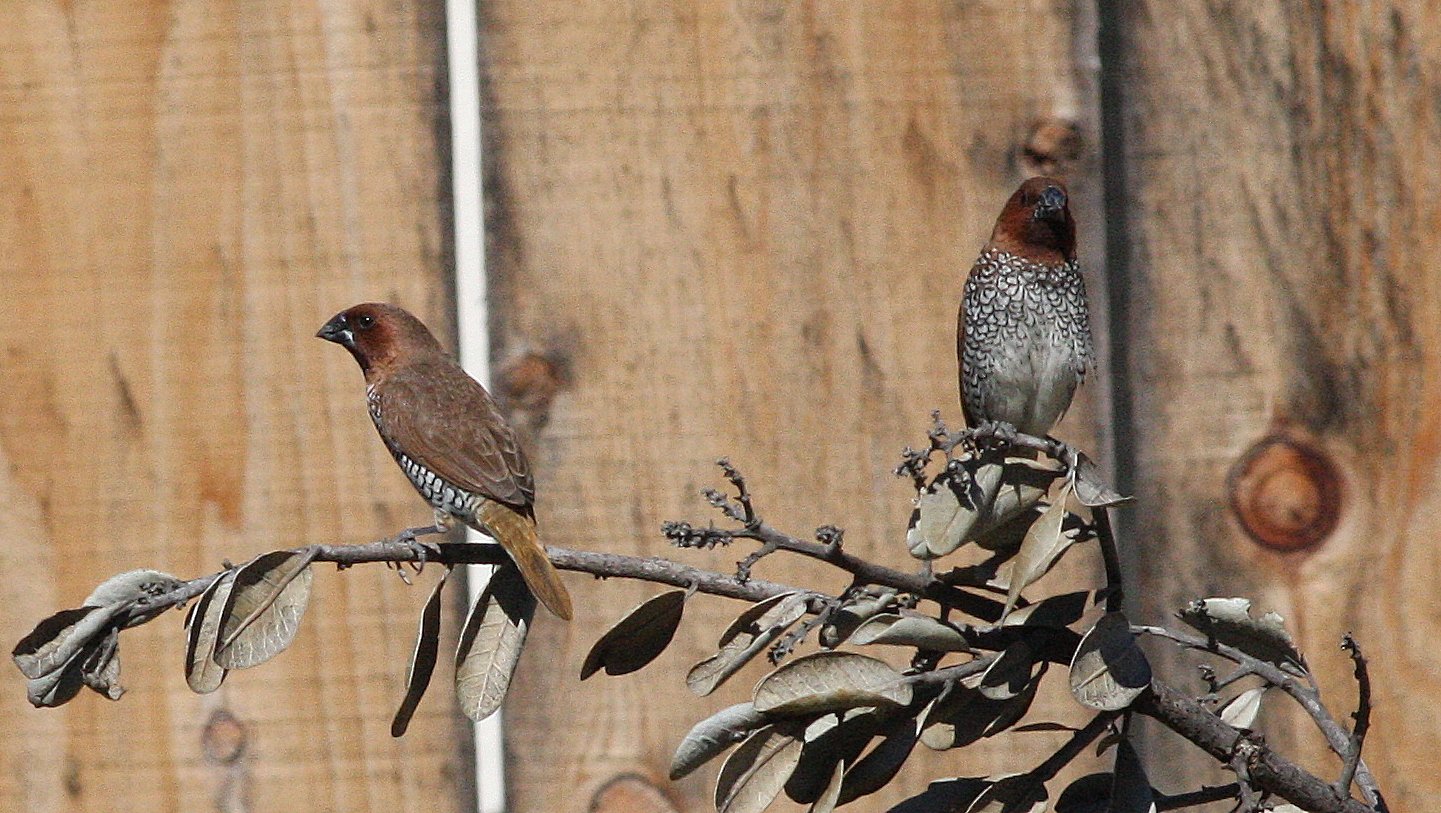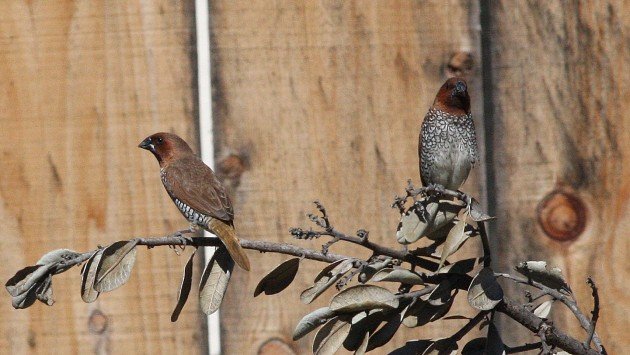
There’s something very matter-of-fact about seeking out non-native target species. There’s very little thrill of the hunt, very little excitement. It feels almost cheap. And when the bird is finally spotted and added to whatever list you care about at that time, it’s almost as if you feel resigned to this milestone. If birding is supposed to offer the opportunity to break free of your workaday life and really connect with nature in that precious free time, then ticking non-natives comes as close as birding gets to feeling like work. Punch the clock. Get your bird. Punch out.
So when Nutmeg Mannikin was finally, at long last, added to the ABA list last summer, it was a foregone conclusion that those birders at the ABA’s San Diego rally, of which I was one, would need to make a trip out of our way to get it. One cannot resist one more bird for the list, even if it’s one that’s technically not supposed to be there. So it was almost out of a sense of duty that the group of birders parked the bus at urban Telocote Park and unloaded to walk along the concrete viaduct in search of these unwanted, but still desired, birds.
They teed up nice behind a row of houses, casually visiting a millet feeder hanging over the privacy fence. It wasn’t a scenic location by any means, but we birders who visit landfills and sewage plants are used to that. And truth told, it’s far from an unattractive bird. The chestnut faces are quite nice looking, and the intricate pattern on the breast, from which the far superior name Scaly-breasted Munia is derived, is hypnotic. If we have to endure yet another invasion from some or another Old World species, at least this one is pleasant to look at. once could conceivably make the argument about House Sparrows too, but I think they’ve worn out their welcome.
Many birders have pretty strong feelings about birds like these, and particularly whether or not they should count on any list that is validated by the listing authorities, be they state rarity committees or the ABA. The argument is a pretty good one, frankly. They’re not supposed to be here. We shouldn’t want them here. We should be actively trying to eradicate these birds from the environment. Leaving aside the fact that an urban park in San Diego is anything resembling an “natural” environment in the first place (though there were Wrentits, a California near-endemic, around). We birders have a slightly skewed interpretation of “nature” anyway, compared to other outdoor enthusiasts like hikers and campers who actively seek to remove themselves from anything human. I suppose what I’m saying is that I understand this sentiment, even if I don’t really agree with it.
With a few exceptions, by the time a bird gets to the point where it’s “countable”, it’s pretty well-established and not likely to go anywhere. Particularly these days when the bar is pretty high. The days of Crested Mynahs and Budgerigars – the former extirpated and the latter nearly so – sneaking on the list are over. Nutmeg Mannikin is pretty common in SoCal, and getting that way in Florida, Texas, and along the Gulf Coast. There can be no denying it.
So why not count them? And why not make a trip, even if it’s undeniably less exciting than a California Thrasher or a Heerman’s Gull.
Just so long as it’s not a milestone, of course.














Holy crap, Nate. That video is exquisitely hilarious!
Every time that video gets to the “Don’t worry. They’ll still count on eBird” part, I crack up…and I’ve seen it a dozen times.